Introduction
Diabetic foot ulcers are common in both Type 1 (insulin-dependent) and Type 2 (non-insulin-dependent diabetes). They can lead to considerable pain and disability.
Having a tendency to recur, they may lead to amputation if blood circulation can’t be maintained and/or take months or years to heal. Many never do. However, wheatgrass extract (Skin Recovery Spray preferred) has healed many of these ulcers simply by applying a small amount over the ulcer surface once a week and keeping the wound clean and covered with a light clean dressing daily if possible. The extract appears to assist the healing process by re-activating damaged or dysfunctional cellular receptors in the affected area(s) which restores blood supply to affected area(s).
How do diabetic ulcers form?
Reduction or blockage of blood flow to a particular area can cause the overlying skin to break down. Because the nerves controlling blood supply have been damaged, (peripheral neuropathy), affected skin becomes vulnerable to even minor injuries that can damage the skin surface and also result in an ulcer. Fortunately though, diabetic ulcers respond to wheatgrass extract by it restoring functionality of the minute nerves that control blood flow to the area.
How should I use wheatgrass on a diabetic ulcer?
It is very important to think "Less is best" when using wheatgrass extract. Apply just enough to cover the ulcer surface - but - once a week only. Keep the wound covered with a light dressing and bandage - and persevere. Do not over-treat.
Following are seven recorded cases of severe, chronic diabetic foot ulcers, all of which have responded well to the extract.
Case #1. Diabetic ulcer.
49 y.o. male. Left forefoot. Ulcer present 4 months and heals after two months' treatment with wheatgrass extract.
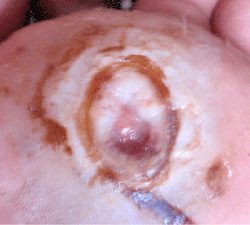
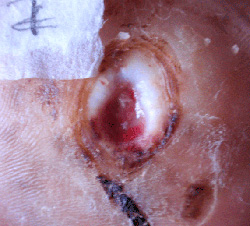
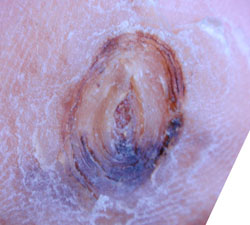
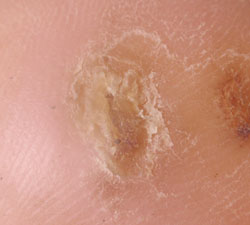
Case #2. Longstanding (many years) diabetic ulcer (foot)
This wound healed sufficiently to enable skin grafting.
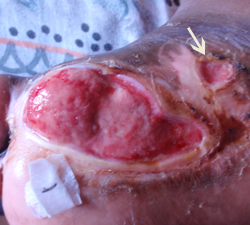
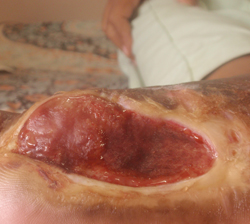
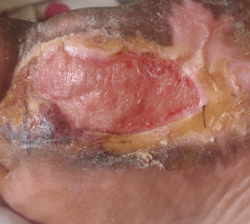
Case #3.
Big toe amputation wound heals quickly
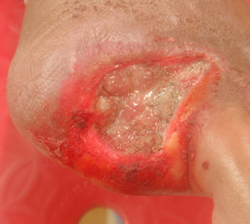
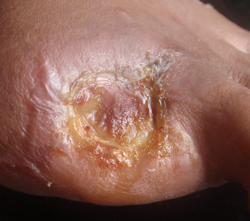
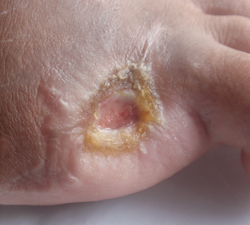
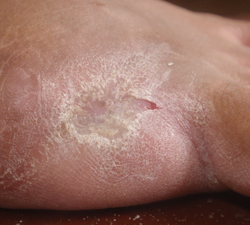
Case #4.
Diabetic ulcer skin graft heals well in 3 weeks
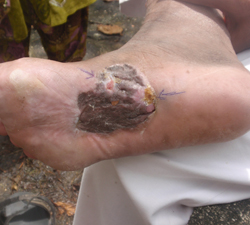
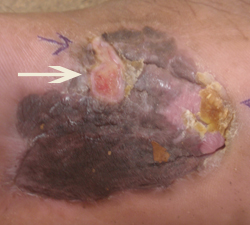
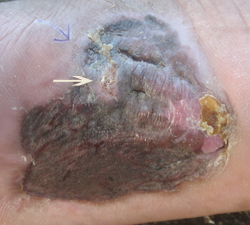
Case #5.
Diabetic ulcer heals in 5 weeks after surgical debridement & wheatgrass
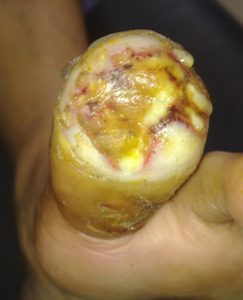
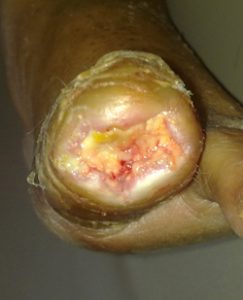
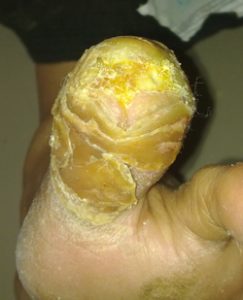
Case #6.
Non-healing diabetic ulcer (due to trauma 4 months earlier). Wound almost healed after one week of wheatgrass.
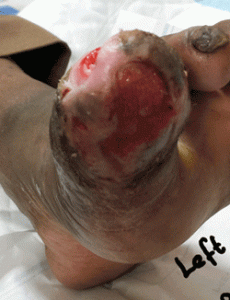
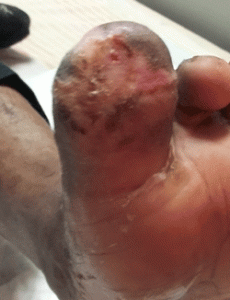
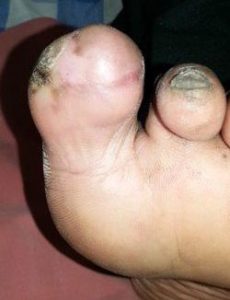
Case #7.
55 y.o. male. Non-healing ulcer on heel 4 years.
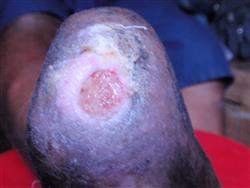
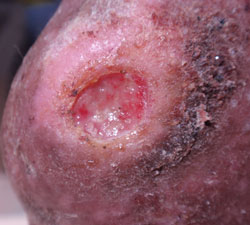
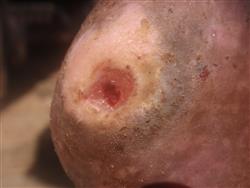
Case #8. Wheatgrass extract recovers diabetic foot ulcer skin graft
This 52-year old Type 2 diabetic patient suffered from peripheral neuropathy, where the nerves controlling the blood circulation of his lower leg were damaged causing a reduction in blood flow to the area. Eventually, a diabetic ulcer developed.
Operation left quite a large wound (Fig.1.) which required a skin graft. However recovery was slow, so the patient began applying wheatgrass extract to the wound.
In two or three days, the wound had revascularised (blood supply recovered) and the open areas were beginning to close. (Fig. 2). After 7 days, the open areas of the graft/wound had closed completely. (Fig. 3.)
NOTE: Diabetic ulcers should be treated with wheatgrass extract no more than ONCE A WEEK. The wound debrides (cleansed), in a few days. Clean dressings should be applied daily throughout the treatment period. Healing may take a month or more, but it works if you prevail.

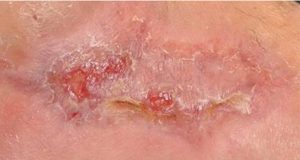
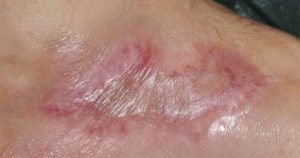
Case #9. A difficult diabetic wound-healing challenge
This 55 y.o. non-insulin dependent diabetic female suffered a severe injury to her knee. After closure with 26 sutures (stitches), the wound soon became infected and re-opened as shown in the top photo. After two weeks' standard treatment, most of the sutures had ruptured causing severe pain.
After cleansing, the wound and applying wheatgrass extract on alternate days only, the extract rapidly cleansed the wound and eliminated infection. Figures 1 to 4 show how effective the extract is for healing wounds, even when severely infected.




The patient is now pain-free and fully mobile. Considering no antibiotics were used, wheatgrass extract clearly assisted healing of this patient's wound.
Please note, longer experience with the extract has made it very clear that "less is best". For instance, this patient would most likely have responded even quicker had she applied the wheatgrass extract every 2 weeks.